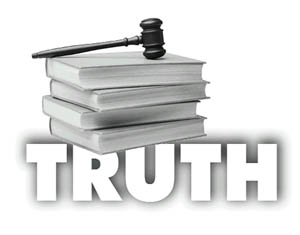 Contempt is a large body of law that affects journalists in many ways. Contempt laws date back to the middle ages when court authorities often faced physical threats. Modern contempt law is premised on the need to preserve the dignified administration of justice. Unlike other areas of the law, contempt has provisions for summary trials and unlimited sentencing powers and does not need to prove criminal intent. This essay will firstly look at the implications of sub judice contempt before going on to discuss effective defences against it. It will then examine some of the other forms of contempt. The essay will conclude with a discussion of contempt restrictions when reporting the courts.
Contempt is a large body of law that affects journalists in many ways. Contempt laws date back to the middle ages when court authorities often faced physical threats. Modern contempt law is premised on the need to preserve the dignified administration of justice. Unlike other areas of the law, contempt has provisions for summary trials and unlimited sentencing powers and does not need to prove criminal intent. This essay will firstly look at the implications of sub judice contempt before going on to discuss effective defences against it. It will then examine some of the other forms of contempt. The essay will conclude with a discussion of contempt restrictions when reporting the courts.The object of sub judice law is to avoid “trial by media”. The most common reason for media being in sub judice contempt is publishing material which might prejudice a jury. In Australia a case is sub judice (under a judge) when it is “pending”. The word “pending” is ill-defined and journalists should consider the matter pending from the time of arrest. A criminal case is deemed to be no longer pending when there is an acquittal or when all appeals have been exhausted or expired. When deciding whether a publication is in contempt, the courts will look to its “tendency” to interfere with justice. “Tendency” relates to potential effect of publication and takes into account factors of prominence, locality, timeliness and the use of images.
There are two main defences to a sub judice contempt charge. They are: fair report, and overriding public interest. Fair and accurate reporting is the cornerstone of the principle of open justice and the public right to know what is happening in courtrooms. The public interest defence offers a less certain immunity. The 1937 Bread Manufacturers case established a defence to allow media to discuss matters of overriding public importance even if in breach of sub judice rules. However, the defence does not provide protection if the matter reported is of direct consequence to the case. In Hinch v Attorney General for the State of Victoria (1987), the defendant’s appeal based on the Bread Manufacturers defence was dismissed. Hinch had the right to suggest that Glennon be suspended from his job while on trial, his mistake was to infer guilt and publicise Glennon’s prior conviction. In Mason CJ’s judgement, the prior conviction statement led to a serious risk of prejudice to jurors who might assume propensity to the crime.
Contempt of court can occur in other ways. In R v Dunbabbin, ex parte Williams, the High Court defined contempt directly related to critical court reporting. It defined “scandalising the court” to mean publication of material calculated to impair confidence in the court. This usually means publishing scurrilous or personal abuse of courts or judges. The defence is truth and fair comment. Other forms of contempt are contempt in the face of court (improper behaviour in a courtroom) and disobedience contempt which is failure to comply with a court order. Media workers in Queensland also need to be aware of the seriousness of the Jury Act which imposes two year imprisonment on anyone who discloses, seeks out or publishes information about jury deliberations.
 Publication of court events is vital in order that justice be seen to be done. Exposure to public scrutiny offers a safeguard against abuse of the courts’ considerable powers. However media workers enjoy no formal rights to a place in Australian courtrooms. Media rooms and benches are a privilege which could be withdrawn at the court’s discretion. Moreover, open justice occasionally conflicts with the right to a fair trial and the due administration of justice. In Australia, victims of sexual offences cannot be identified. Sometimes that means the accused cannot be identified either if doing so would provide clues as to the identity of the victim. Similarly children charged with criminal offences cannot be identified, with minimum age of identification varying across jurisdictions. The Family Law Act goes further and bans identification of all parties and witnesses involved in a family law matter. Some courts have appointed media relations officers whose role is media liaison and public education. Journalists should use this valuable resource wherever available.
Publication of court events is vital in order that justice be seen to be done. Exposure to public scrutiny offers a safeguard against abuse of the courts’ considerable powers. However media workers enjoy no formal rights to a place in Australian courtrooms. Media rooms and benches are a privilege which could be withdrawn at the court’s discretion. Moreover, open justice occasionally conflicts with the right to a fair trial and the due administration of justice. In Australia, victims of sexual offences cannot be identified. Sometimes that means the accused cannot be identified either if doing so would provide clues as to the identity of the victim. Similarly children charged with criminal offences cannot be identified, with minimum age of identification varying across jurisdictions. The Family Law Act goes further and bans identification of all parties and witnesses involved in a family law matter. Some courts have appointed media relations officers whose role is media liaison and public education. Journalists should use this valuable resource wherever available.
No comments:
Post a Comment